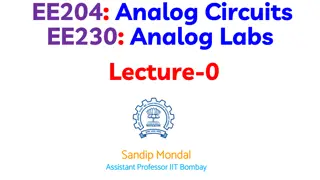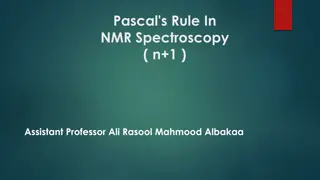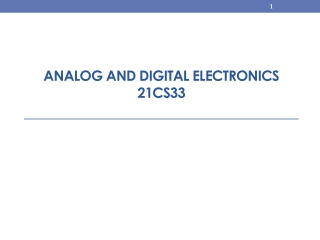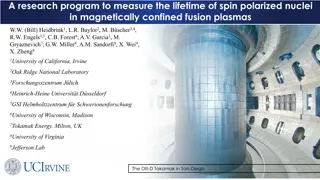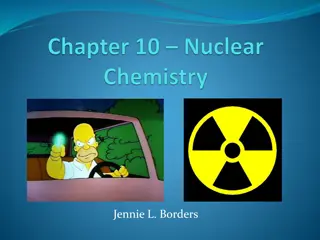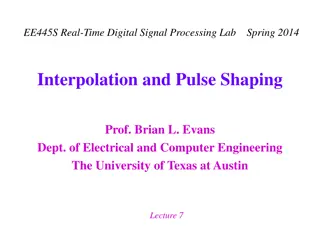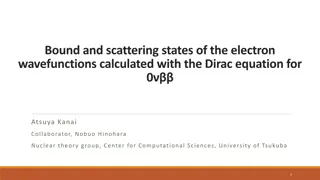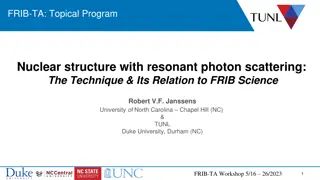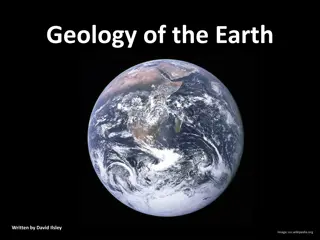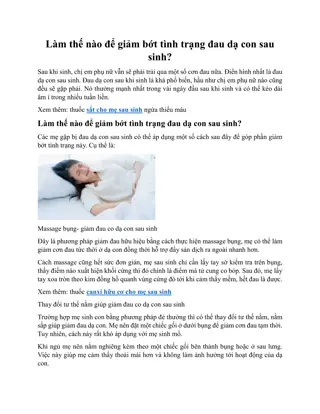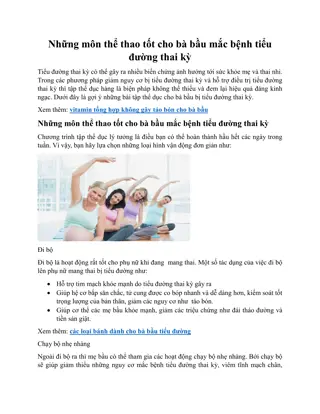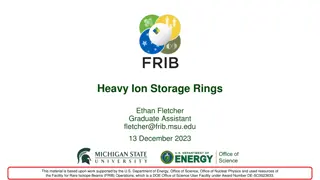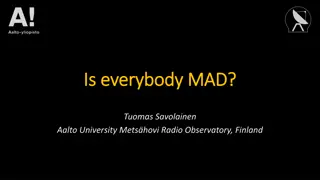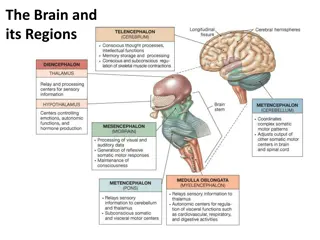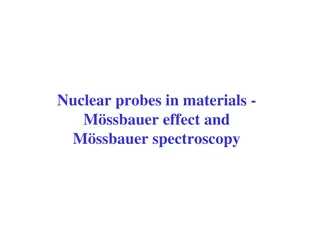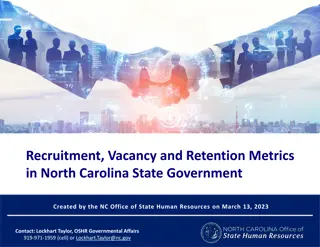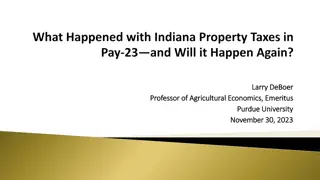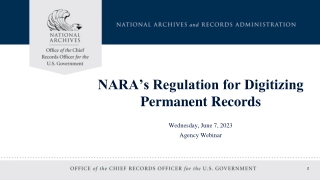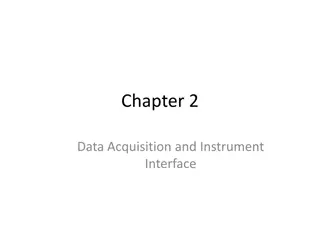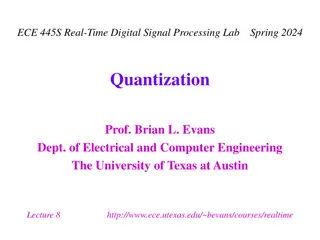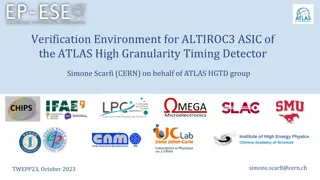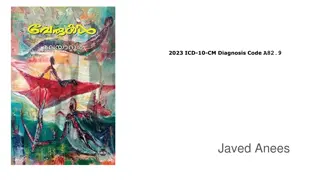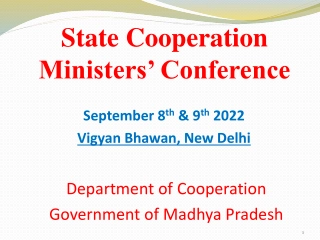Possible Analog States of the Hoyle State in Heavier Nuclei
Research conducted at the National Research Centre, Kurchatov Institute, explores possible analogs of the Hoyle state in heavier 4N nuclei, focusing on the 7.65 MeV 0+2 state in 12C (Hoyle state). The study reveals insights into the structure and characteristics of the Hoyle state, crucial for understanding the formation of elements heavier than 12C in the Universe. The research utilizes a modified diffraction model to determine diffraction radii and investigates analog states in 16O. Experimental works on 20Ne further shed light on condensed states associated with specific excitation energies, contributing to the broader understanding of nuclear physics.
Possible Analog States of the Hoyle State in Heavier Nuclei
PowerPoint presentation about 'Possible Analog States of the Hoyle State in Heavier Nuclei'. This presentation describes the topic on Research conducted at the National Research Centre, Kurchatov Institute, explores possible analogs of the Hoyle state in heavier 4N nuclei, focusing on the 7.65 MeV 0+2 state in 12C (Hoyle state). The study reveals insights into the structure and characteristics of the Hoyle state, crucial for understanding the formation of elements heavier than 12C in the Universe. The research utilizes a modified diffraction model to determine diffraction radii and investigates analog states in 16O. Experimental works on 20Ne further shed light on condensed states associated with specific excitation energies, contributing to the broader understanding of nuclear physics.. Download this presentation absolutely free.
Presentation Transcript
NATIONAL RESEARCH CENTRE "KURCHATOV INSTITUTE POSSIBLE ANALOGS OF THE HOYLE STATE IN HEAVIER 4N NUCLEI
7.65 MeV 0+2state in 12C (Hoyle state) Rrmsof the Hoyle state * Through the Hoyle state, elements heavier than 12C are formed in the Universe * Hoyle's state is not described within the shell model. * The structure of the state is unknown A prototype of the -condensate state? * Increased radius is predicted within many theoretical models Our result: 2.9 fm; 60% probability of configuration with 3 -clusters on the lowest s-orbit Calculations from first principles: 2.8 fm (difference between radii of the g.s. and the Hoyle state 0.36 fm) T. Otsuka et al., Nature Comm. 13, 2234 (2022) 2 * Stll actual K.C.W. Li et al. Phys. Rev. C 105, 024308 (2022) | T. Otsuka et al., Nature Comm. 13, 2234 (2022)
Method Modified diffraction model Diffraction radii are determined from minima (maxima) positions in d /d Inelastic scattering (0+ 0+) Elastic scattering 2 d d 1( ) x ( ) ~J x el d d 2 0 (0 0) ~ ( ) x J = x qR dif Rdifis the only parameter of the model. As it has the dimension of length it can be directly connected with a real (rms) nuclear radius Model: Rrms(exc.st) = Rrms(gr.st) + [Rdif(in) - Rdif(el)] The method was tested in the analysis of the radius of Hoyle state in 12C A.S. Demyanova et al., Int. J. Mod. Phys. E17, 2118 (2008). A.N. Danilov et al., Phys. Rev. C 80, 054603 (2009). 3
Analogs of the Hoyle state (12C, 0+2) in 16O MDM A. A. Ogloblin et al., Phys. Rev. C 94, 051602(R) (2016) BEC Y. Funaki et al., PRL 101, 082502 (2008). We determined directly the rms radii of 16O in a number of states with excitation energies up to 15.1 MeV applying the MDM. No significant radius enhancement in any states was observed. We did not confirm the existence of a dilute state with super-large radius associated with the 15.1-MeV 0+6state, which was predicted by the BEC model. The rms radius of 16O in this state was found similar to the radius of 16O in the ground state. From this point of view, the 0+6state cannot be considered as an analog of the Hoyle state in 12C. 4
Overview of current situation with 20Ne Experimental works S. Adachi et al., Physics Letters B 819, 136411 (2021) conducted the coincidence measurement of alpha particles inelastically scattered from 20Ne at 0 in order to search for the 5 condensed state in 20Ne. Comparing the measured excitation energy spectra and decay branching ratio with the statistical decay-model calculation, found that the newly observed states at Ex= 23.6, 21.8, and 21.2 MeV in 20Ne are strongly coupled to the 0+6state in 16O. These states are the candidates for the 5 condensed state in 20Ne? Theoretical works J. Zhang, W.D.M. Rae, Nucl. Phys. A 564, 252 (1993). AMD calculations: Y. Kanada-En yo and K. Ogata, Phys. Rev. C 101, 064308 (2020) In the structure calculation of 20Ne with AMD, 16O + cluster structures were obtained in the parity-doublet K = 0+1and K = 0 1bands, and the 12C +2 -like structure was obtained in the K = 2 band. The AMD calculation reproduced the experimental B(E2) of in-band transitions. It also described the experimental form factors of the 0+1, 2+1, and 4+1states R. Bijker and F. Iachello Nuclear Physics A 1006, 122077 (2021). Available experimental data in 20Ne can be described in terms of the bi-pyramidal cluster configuration suggested by Brink in 1970. All observed bands with band-heads up to an excitation energy of about 12 MeV can be accounted for in terms of the vibrationless ground state band, of the nine vibrational modes expected on the basis of D3hsymmetry (3 singly degenerate and 3 doubly degenerate), and of six of the double vibrational bands expected on the basis of D3hsymmetry. Strong evidence for a quasimolecular structure of 20Ne with D3h symmetry. 5
Overview of current situation with 20Ne Theoretical works framework based on energy density functionals: P. Marevi et al., Phys. Rev. C 97, 024334 (2018) The structure of the lowest positive- and negative-parity bands of 20Ne has been analyzed using a beyond mean-field approach based on relativistic energy density functionals both for the ground-state band as well as for the excited K = 0 bands. A good agreement with experimental results for the energies of the lowest positive- parity states, as well as with available data on low-energy negative- parity states. In particular, the spectroscopic properties of 20Ne have been calculated at a level of accuracy comparable to those obtained using more specific models, such as antisymmetrized molecular dynamics. ab initio calculations: A.C. Dreyfuss et al., Phys. Rev. C 102, 044608 (2020). The formalism was demonstrated in a study of the 16O + ? cluster structure of 20Ne, through inspection of the relative motion wave functions of the clusters within the 20Ne ground state and the 1 resonance (ab initio SA-NCSM calculations). The importance of correlations in developing cluster structures was shown. 6
Band K= 0+1 g.s. 0+ 1.64 MeV 2+ 4.25 MeV 4+ 16O + ? ? cluster structure Normal radius ? ?rms(g.s.)= 2.87 0.03 fm ? ?rms(1.63) = 3.0 0.2 fm AMD: Y. Kanada-En yo and K. Ogata, Phys. Rev. C 101, 064308 (2020). 7
Band K= 2- 4.97 MeV 2 5.62 MeV 3 7.00 MeV 4 8.45 MeV 5 ? ?rms(g.s.)= 2.9 0.1 fm 12C + 2? ? cluster structure Normal radius AMD: Y. Kanada-En yo and K. Ogata, Phys. Rev. C 101, 064308 (2020). 8
Band K= 0-1 5.79 MeV 1 7.17 MeV 3 10.26 MeV 5 16O + ? ? cluster structure 10% radius increase ?rms(5.79) = 3.4 0.2 fm ?rms(7.17) = 3.4 0.2 fm AMD: Y. Kanada-En yo and K. Ogata, Phys. Rev. C 101, 064308 (2020). 9
Band K= 0+2 6.73 MeV 0+ 7.42 MeV 2+ 9.03 MeV 4+ ? ?rms(g.s.)= 2.87 0.03 fm ? ?rms(6.73) 3.6 fm We obtained 25% radius increase for this state comparing to the g.s. radius. Practically the same increase we observed for the Hoyle state in 12C. The 6.73 MeV state is located 2 MeV above the ?-emission threshold, so our result can be the argument for the possible alpha-condensate structure. Perspectives: we need to check other high-lying 0+states, new experimental data are needed Current results are published: A.S. Demyanova et al., arXiv:2206.09475 (2022) 10
Next goal 24Mg Preliminary results for low-lying states Currently no radius enhancement was observed for low-lying excited of 24Mg Perspectives: we need to check other high-lying states, especially 0+ Our colleagues last results: Dong-Xi Wang et al., Chin. Phys. C (2022), to be published: A number of resonances up to 30 MeV excitation in 24Mg with the +20Ne cluster configuration were observed, most of the states are decaying to 20Ne in the g.s. and two first excited states (experiment 16O(12C,24Mg-> +20Ne) ). 11
Conclusions The rms radii of excitation energies up to 15.1 MeV were determined. No significant radius enhancement in any states was observed. The ??? radii of20Ne in a number of states with excitation energies up to 7 MeV were determined. 20% radius enhancement was obtained for the K?= 0 1band members. Moreover, our estimates of the radius of the 0+2state, the head of the K?= 0+2band, showed 25% radius increase. Obtained result can speak in favor of possible ?-condensate structure of the 0+2state Preliminary results for the24Mg - no significant radius enhancement in any states was observed, analysis is in process Next goal 28Si 16O in a number of states with 12


